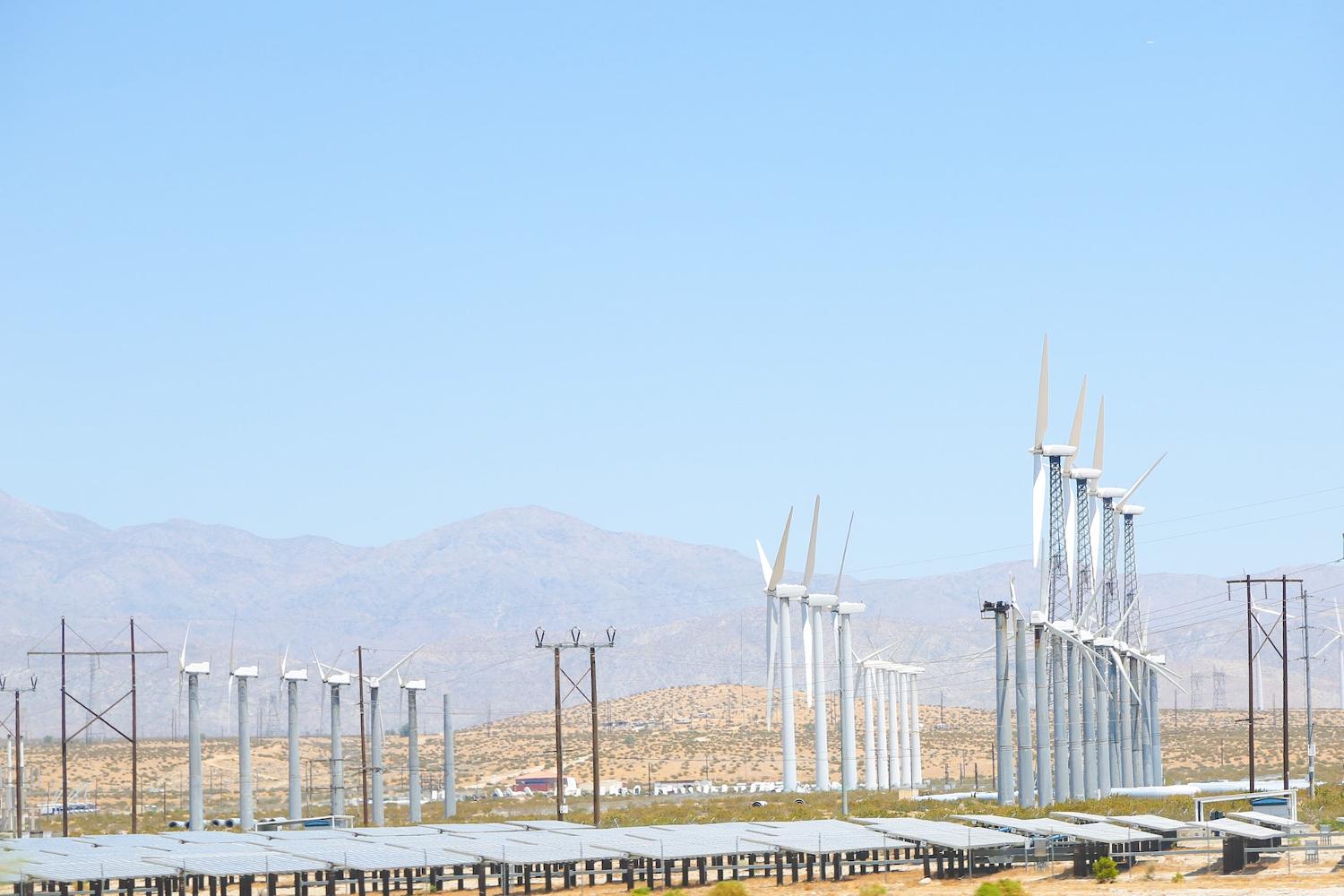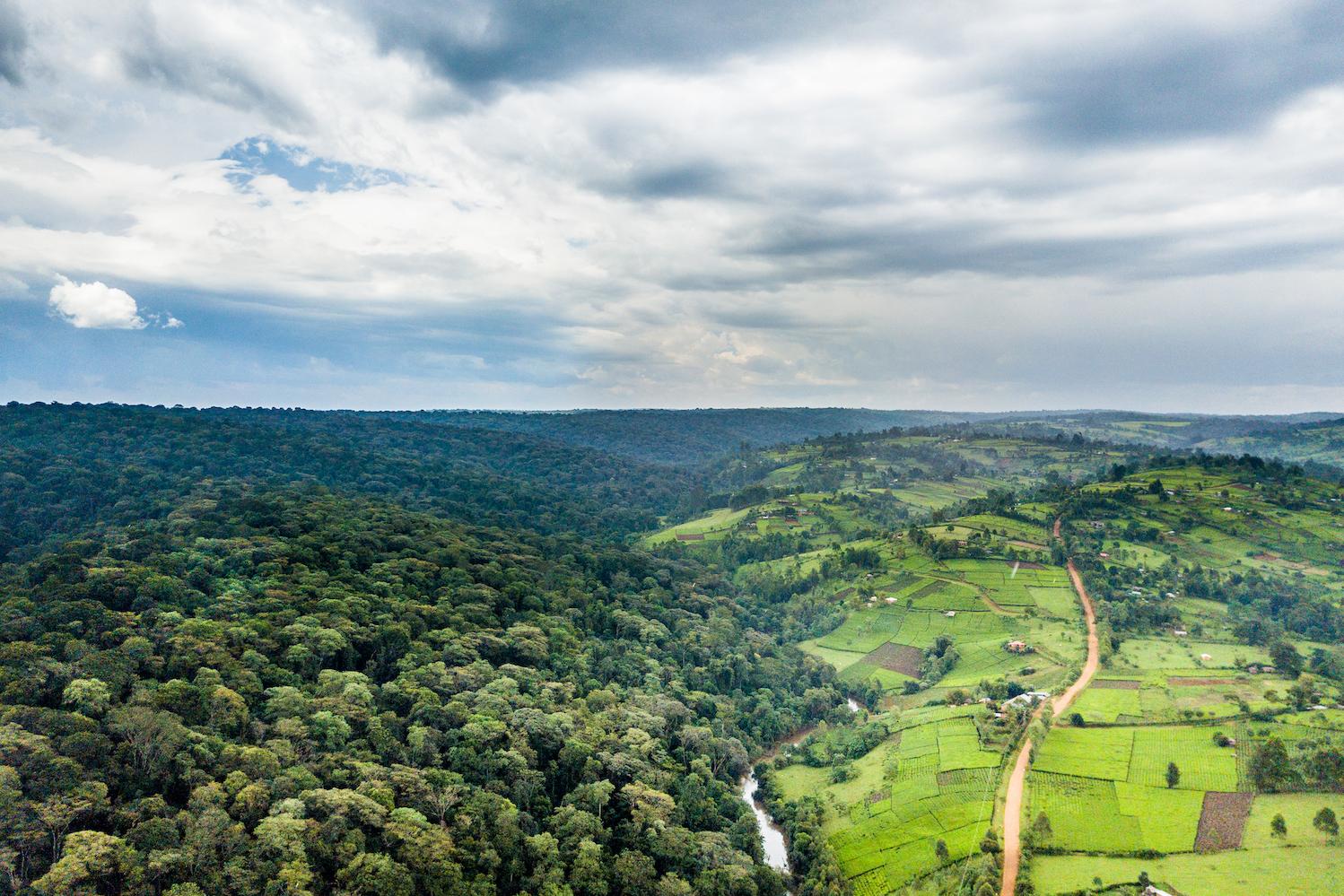
(Image: Chris Leipelt/Unsplash)
Humanity must adapt to deal with the impacts of climate change as we work to reduce emissions and hold global temperature rise to 1.5 degrees Celsius. Despite its drawbacks, artificial intelligence (AI) has an important role to play in both climate solutions and climate change adaptation, alongside other technologies like cloud computing.
When programmed and used correctly, AI’s ability to synthesize and interpret data to find patterns and predict outcomes makes it a valuable tool with significant potential for positive change. It’s no surprise that technology-driven solutions were prevalent in 2023 or that they continue to be a big deal as 2024 begins. Here are five climate solutions that hit our radar in 2023 that we will continue to watch this year.
Reducing carbon emissions from aviation
Limiting carbon emissions isn’t just about the biggest sources of pollution. Reducing emissions from smaller sources can add up to significant gains or losses in the long run. That’s the idea behind EMMA (Environmental and Movement Monitoring for Airports), a cloud-based AI management platform that cuts unnecessary taxiing time at airports around the world.
The average taxi time for departing flights is over 16 minutes, according to the U.S. Federal Aviation Administration. The average is nearly nine minutes for arrivals. While that might not sound like much, the wasted fuel and unnecessary emissions add up in the end. By better predicting how delays and disruptions will impact arrivals and departures, EMMA helps air traffic controllers improve their decision-making and efficiency. This dynamic enables reduced taxiing time and lowers unnecessary carbon emissions.
Founders Mohammad Hourani and Wisam Costandi spoke with 3p last year about the implementation of EMMA and their plans for its future. They estimate that cutting even a minute off the average taxi time could save a significant amount of emissions.
Read more about EMMA and reduced taxiing time here.
Limiting peak power use
Logical Buildings has been around for a decade. Through its GridRewards app and SmartKit AI software, users can plan their energy consumption to avoid peak use times — leading to fewer carbon emissions from peaker power plants. These plants are brought online to help meet demand during peak hours. They are fossil fuel intensive and emit substantially more carbon than base load plants. Logical Buildings’ software allows residential customers and building operators to plan to use the most energy when renewable energy is readily available. Recently, the company stepped up its game to include not just multi-family housing and larger building operators but individual users, as well.
“That's really one of the key prerequisites to empower people to combat climate change — to know what to do and when,” Jeff Hendler, the company’s CEO, told 3p. “Certain times of day, there's more carbon being generated by the grid. And if you were to know that, you had that visibility, that access to information as an end user, that will change your decisions and how you behave.”
Read more about Logical Building’s tech here.

Assisting the grid transition
Transitioning from fossil fuels to renewables is a core strategy that world leaders are relying on to slow increasing global temperatures, but the energy transition comes with tough challenges. Electrical grids were originally developed around fossil fuels, a supply of which is delivered from power plants 24/7 and can be increased by peaker plants when demand is high. Renewables don’t deliver energy in the same way. Their energy supply fluctuates based on things like sunlight and wind.
That lack of a steady flow can destabilize the grid and, in the worst case, cause issues like blackouts. While it’s not feasible to build a new grid from scratch, technology-driven climate solutions can hep.
This is where the cloud computing power of Reactive Technologies comes in, measuring stored energy and system strength. “Using this system, operators can accurately map any deviations in levels of voltage and electrical frequency, allowing an almost instantaneous response to keep the grid in balance,” Frederico Rauter, chief revenue officer at Reactive Technologies, told 3p. “With GridMetrix in place, operators around the world can reduce the risk of grid instability and bring more renewables online, safely and cost-effectively.”
Read more about how Reactive Technologies is aiding the energy transition here.
Predicting flash floods
Highly sensitive, accurate forecasting and robust early warning systems are even more vital as natural disasters increase in both frequency and destructive force. As far as sounding the alarm on extreme weather events goes, flash floods present a particularly difficult challenge — currently, only very short notice is possible. A partnership between IBM and the University of Illinois strives to change this using an AI model capable of anticipating heavy rainfall and flash floods, starting in the Appalachian Mountains.
“It's very important for local populations, because in mountainous regions … the small towns, the villages, schools, infrastructure, they're all located at the lower elevations for the most part because that's where access is easy,” Ana Barros, professor and engineering department head at the University of Illinois, told 3p. “If one of these flash floods comes through, it tends to kill many people and destroy infrastructure. It's really the complete disaster in terms of all of its social and economic implications.”
If the team is successful, the hope is that the same AI model could be calibrated to work in other mountainous regions around the world. By integrating this enhanced forecasting with early warning systems, significant loss of life could be prevented.
While it’s too early to know how this will play out, the ability to better predict disasters like flash floods could tie in with the U.N.’s Early Warnings for All initiative. The effort aims to make extreme weather notifications available for everyone on Earth by the end of 2027, regardless of where they live or the types of storms involved. Of course, it remains to be seen how far ahead the AI will be able to predict flash floods and what stakeholders will do with that information.
Read more about IBM and the University of Illinois’ work to predict flash floods here.

Using technology to measure the success of climate solutions like reforestation
IBM recently partnered with NASA to develop new AI models capable of interpreting satellite data from a specific geographic location, learning from it, and applying patterns and predictions to real-world circumstances to help communities combat and adapt to climate change.
In the case of Kenya’s natural water towers — mountainous, forested regions that collect and filter the rain and snow that eventually fills rivers, lakes, springs and the groundwater supply — this partnership seeks to measure outcomes from the government’s conservation and reforestation efforts in mountain rainforests. By determining which tactics are working, the AI model informs decision-makers on how to best focus their efforts.
Although IBM’s role in Kenyan sustainability efforts is relatively new, it shows that climate solutions can be measurable. The technology can motivate individuals, businesses and governments to support projects by providing evidence of tangible payoffs. The AI models developed by IBM also demonstrate the potential for such technology to be used anywhere that satellite images can give before and after pictures of sustainability efforts. By utilizing AI in this manner, we can avoid spinning our wheels on ineffective methods and more accurately focus our actions on what’s proven to work.
While the model is already yielding some results, IBM intends to tune it further with higher-resolution photos, Juan Bernabe-Moreno, the director of IBM Research Europe in Ireland and the U.K., told TriplePundit. Higher resolution will improve the accuracy of the model’s interpretations.
Read more about how IBM and NASA are helping the Kenyan government achieve its sustainability objectives here.
Moving forward with AI and technology-driven climate solutions
AI faces substantial criticism for promoting its programmers’ biases, threatening jobs and more. But it can also be used to do a lot of good, especially in the realm of climate solutions. It behooves humankind to make the most of it — and other technology options like cloud computing — in ways that can benefit the planet. We’re excited to see how these technologies develop in 2024, as well as what new climate solutions the year may have in store.

Riya Anne Polcastro is an author, photographer and adventurer based out of Baja California Sur, México. She enjoys writing just about anything, from gritty fiction to business and environmental issues. She is especially interested in how sustainability can be harnessed to encourage economic and environmental equity between the Global South and North. One day she hopes to travel the world with nothing but a backpack and her trusty laptop.














